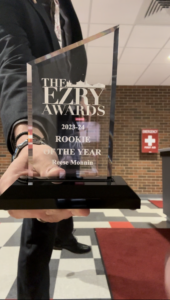President Joyner,
Last week I asked if you would explain to the campus community why you chose not to explore organic alternatives to the use of herbicides on campus as requested by Wittenberg staff and faculty, why students were not given any notification of the impending use of herbicides on September 25, and why warning flags were not utilized.
According to a communication from Michael Brady, Assistant Vice President for the Physical Plant, the lack of student notification was an oversight. However, on September 23 I e-mailed David Nease, who identified himself as the Physical Plant Director when he notified faculty and staff that day of the herbicide application. I specifically requested him to notify students of the herbicide application and advise them to stay off the lawn. He never responded.
Mr. Brady maintains that signs were posted on campus the day following the herbicide application. I saw no posted signs the day of the spraying and if any were in place they were so sparse as to escape the notice of most students. (Indeed, none of my students reported seeing any signs or flags.)
Mr. Brady also states that the chemical 2,4-D was not used on September 25. If 2,4-D was not used – as has been done in the past, over some strong objections – please advise the campus community what herbicide was used. And does this mean that 2,4-D not be used on campus again?
These questions remain: Will you ask the Wittenberg Sustainability Committee to explore the pros and cons of organic lawn care, or explain why you refuse to do so? And, if herbicides continued to be used on campus, will you please ask the Director of the Physical Plant to identify the chemicals, advise students to avoid contact with the lawn and ensure that plenty of warning signs are posted when the herbicide application begins? The campus community deserves to know your plans on further use of 2,4D and unidentified herbicides.
David Nibert,
Professor of Sociology







